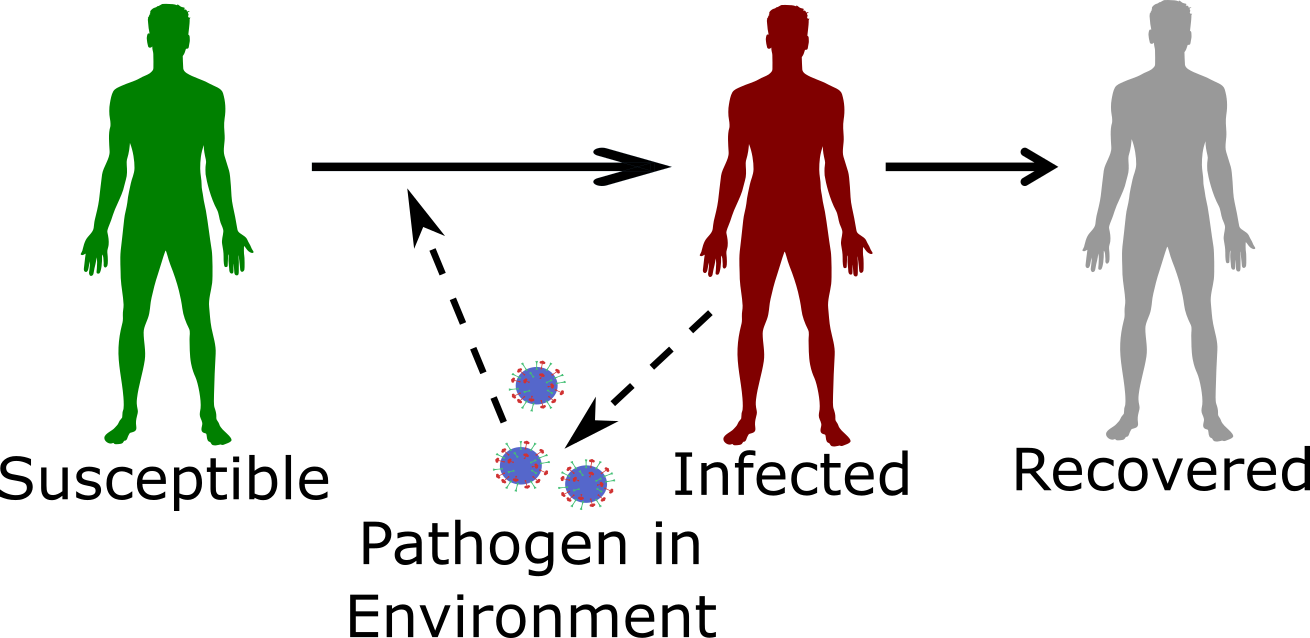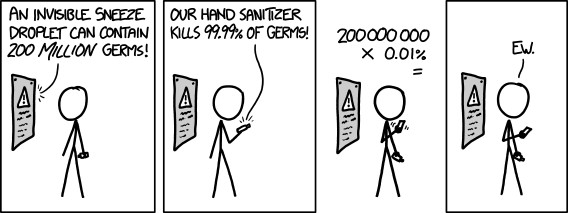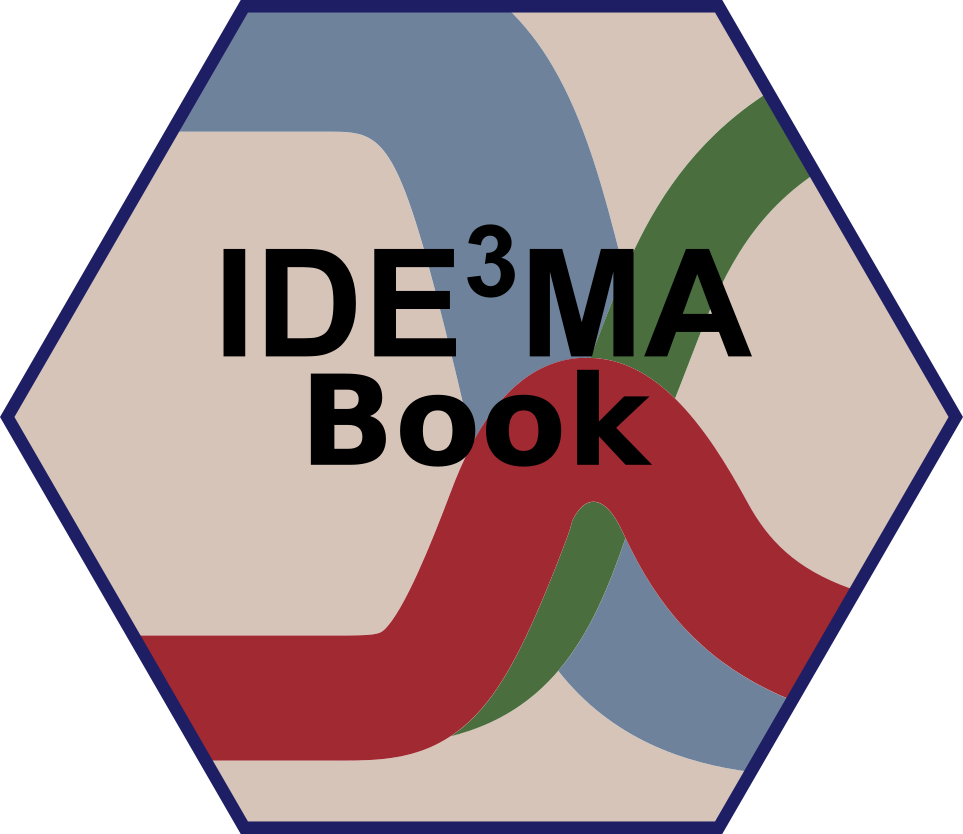Chapter 8 Environmental Transmission
8.1 Overview and Learning Objectives
A number of pathogens are transmitted through an environmental stage. This chapter discusses the implications on the ID dynamics in such cases.
The learning objectives for this chapter are:
- Know the hallmarks of indirect, environmental transmission.
- Contrast the difference between direct and environmental transmission.
- Assess how indirect transmission processes affect ID dynamics.
- Understand what environmental transmission implies for control strategies.
- Identify diseases for which the environmental transmission pathway is important.
8.2 Introduction
While the distinction between direct and indirect transmission is not clear-cut, we usually consider an ID to have an indirect mode of transmission if the time spent outside the main host is important for the whole transmission cycle. The two main types of stages where a pathogen resides outside the main host are the abiotic environment or another host species. In the case of the former, we consider it to be environmental transmission, in the case of the latter, it is vector-borne. Of course, some IDs are even more complicated and have both vector and environmental stages. This chapter focuses on environmental transmission.
8.3 Environmental Transmission Basics
Some diseases are shed by hosts into the environment, where they can survive for a potentially extended time before re-infecting a new host. Cholera is an excellent example of an ID that has water sources as the environmental stage. Similarly, avian influenza is thought to survive in cold lake water for an extended time. The important consequence of environmental transmission is that it potentially allows new infections to occur over long distances in time and space. For instance, an infected person might shed Cholera into the water somewhere upstream, and a susceptible person ingests the Cholera bacteria somewhere miles downstream and days or weeks later. This is fundamentally different to direct transmission, which requires close contact.

Schematic of an ID with environmental transmission
8.4 Environmental Transmission and External Drivers
Because environmental transmission involves the survival of pathogen for a potentially extended time in the environment, such IDs are often more strongly influenced by external drivers compared to IDs that are directly transmitted. The weather often has a strong impact, as do behavior changes. E.g., humans living in temperate zones are more likely to swim in lakes when it’s warm. Therefore water-borne diseases often have the highest incidence in warm months.
Such external drivers can be included in models by allowing certain parameters to vary over time. For instance the transmission rate or the rate at which environmental pathogen decays could be made dependent on the time of the year.
8.5 Environmental Transmission and Interventions
The environmental stage is a potentially great target for control mechanisms. Disinfecting surfaces with chemicals such as bleach is common practice in hospitals and other places where contamination might be common and needs to be minimized. Similarly, attempts have been made to disinfect the air with for instance UV radiation. Unfortunately, such radiation can be harmful to humans, and thus this approach only works within a system that moves and circulates air (e.g., an air-conditioning system with a stage at which the circulated air is irradiated). All modern water treatment plants have systems that remove pathogens, in conjunction with good sanitation practices, have reduced the incidence of diseases like Cholera. However, in developing countries, Cholera and other water borne disease are still a major public health concern. Even with proper sanitation, other pathogens like norovirus are hard to control and still often cause local outbreaks. One reason for that is that these viruses are hard to kill and many regular cleaning agents do not work. Maybe the most important and famous environmental control strategy is the tried and true method of hand washing (personal hygiene). Our hands can be considered a potentially infected environment. By washing them, the transmission of pathogens to others is minimized. The fact that hand-washing is a great infection control strategy has been known for centuries. Unfortunately, compliance is often still low, leading to many needless infections, even in settings like hospitals, where one should expect the staff to know the importance of adhering to the hand-washing routine.
8.5.0.1 Modeling Environmental Transmission
Most often, during the environmental stage, we assume that the pathogen does not ‘do’ anything. This is in contrast to vector-borne transmission where the pathogen might, for instance, undergo replication in the vector. Thus, we assume that infected hosts shed pathogen into the environment, where it decays. If a susceptible person comes into contact with the pathogen in the environment, an infection can occur. The simplest SIR type model that can capture this process is given by \[ \begin{aligned} \dot S &= - b S P \\ \dot I &= b S P - g I \\ \dot R &= g I \\ \dot P &= q I - cP \end{aligned} \] Infected persons release pathogen into the environment at rate q. The pathogen decays at rate c. A susceptible host can get infected by contact with pathogen in the environment at rate b.
8.6 Case Study Examples
8.6.1 Basic Science Example: Environmental Transmission for Cholera
8.6.2 Policy/Application example:
8.7 Summary and Cartoon
This chapter provided a discussion of environmental transmission and its impact on ID dynamics and control.

One problem with environmental transmission control. Source: xkcd
8.8 Exercises
- The Environmental transmission app in the DSAIDE package provides hands-on computer exercises for this chapter.
- The paper by Killingley and Nguyen-Van-Tam describes modes of transmission for influenza. Pick a pathogen that can transmit in a somewhat similar manner (e.g., Ebola, SARS, MERS, or such) and compare and contrast what is known about similarities and differences in transmission between flu and the pathogen you pick. Also briefly discuss implications for control.
8.9 Further Resources
- The paper (Cortez and Weitz 2013) discusses how direct versus indirect transmission can lead to different incidence patterns and how models can help to determine routes of transmission.
- Ewald discusses the relation between environmental transmission and virulence in (Ewald 1991).
- Some further discussion about influenza routes of transmission is provided in (Brankston et al. 2007; Weber and Stilianakis 2008).
